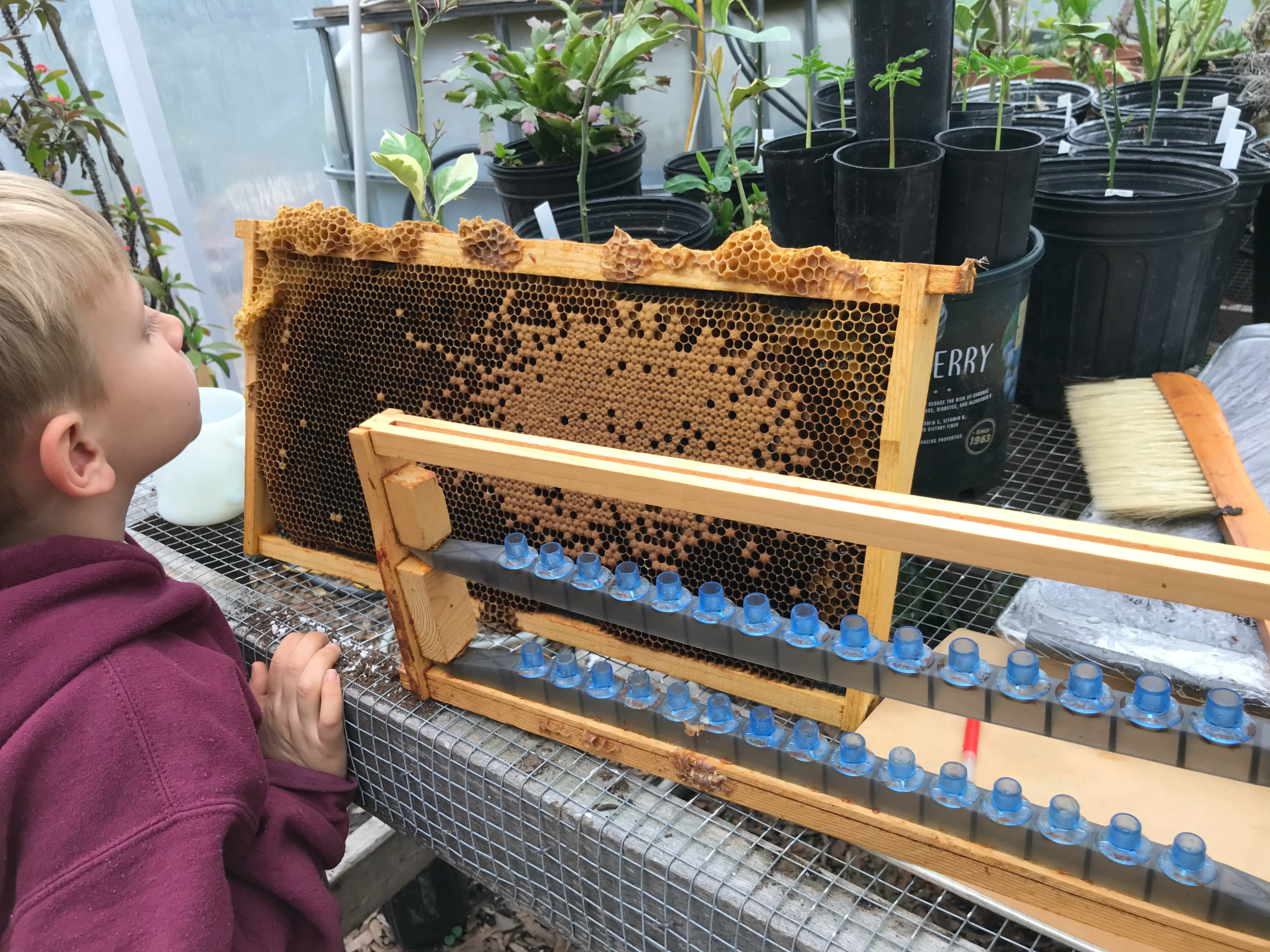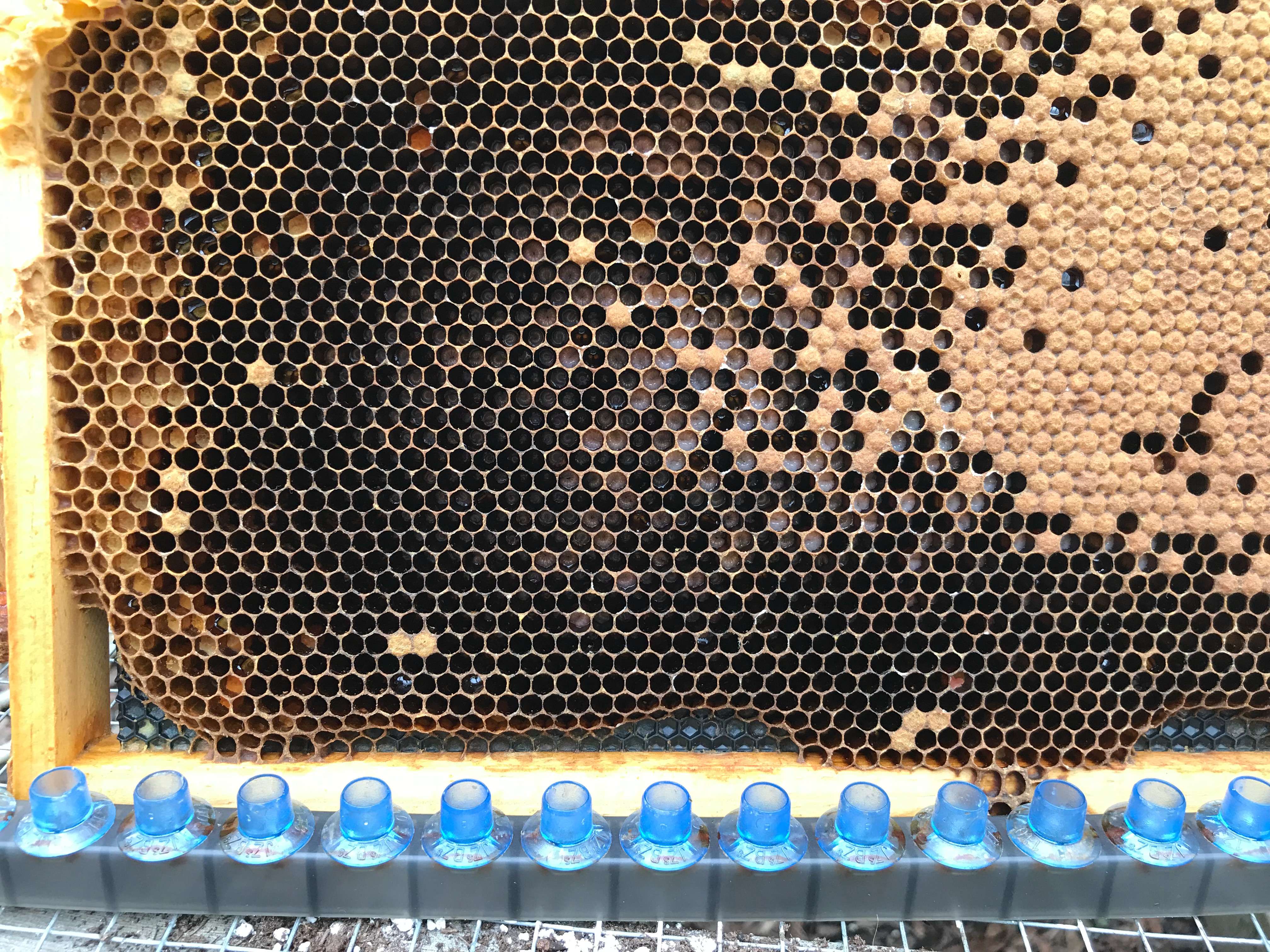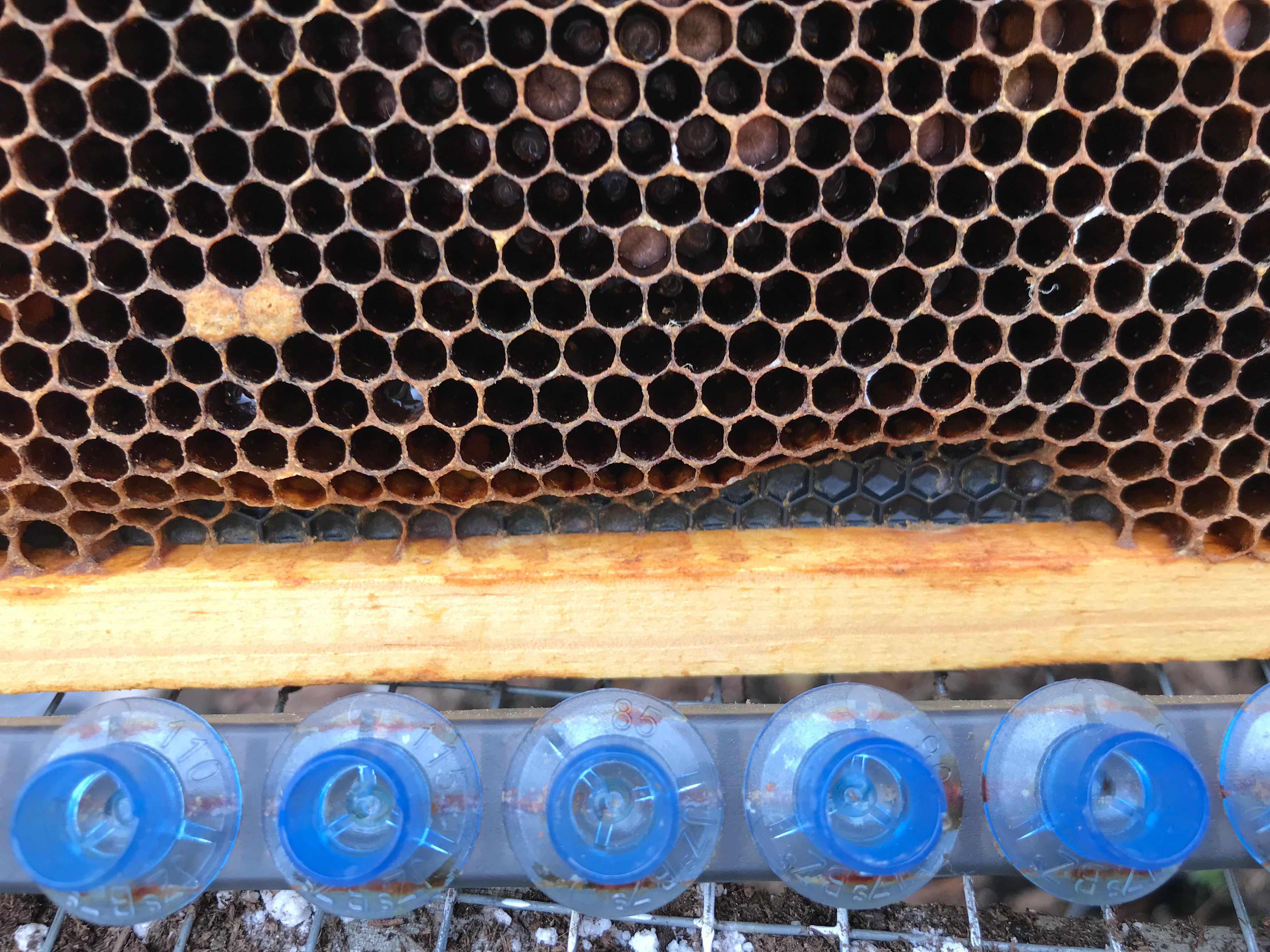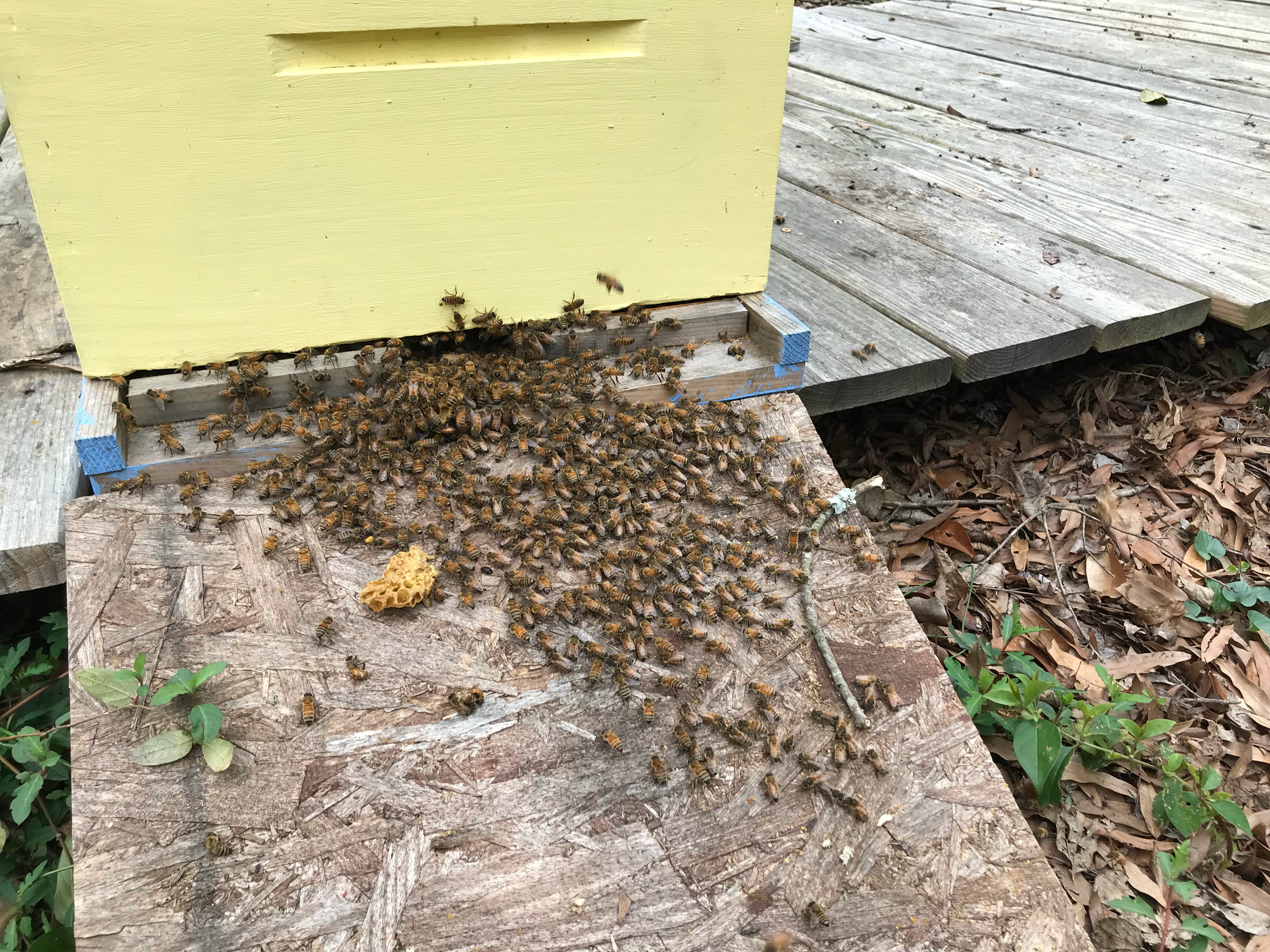Grafting Queens
Grafting Queens

Elliot is having a a look at the eggs and larvae on that frame of brood.
Yesterday I 'grafted' 30 queens. Most people associate grafting with trees, where you take a cutting of a tree, say, that bears nice fruit, and splice it into a hearty rootstock to blend properties of each type of tree and make a hearty tree that bears nice fruit. The way that we raise queens is called grafting because when we put a tiny-tiny baby bee ( larvae ) in a different place, the worker bees acting as nurses for the babies will care for the larvae differently and raise them as queens. Yes, a queen is a worker bee fattened up since birth to be a queen. All females in a hive can lay eggs, they just don't when things are going normally -- laying workers is a break-glass hormonal response of extended queenlessness in a hive.
So how do we turn worker larvae into queens? We take them out of horizontal cells of the comb and put them in vertical "cups" that the nurse bees turn into queen cells. The bees naturally do this when swarming, or replacing an old or non-laying queen, called supersedure. We use this same instinct to raise queens, and we try to do it in a way that promotes the bees' natural instincts for swarming and hive reproduction, while saving them some of the trouble of starting from scratch looking for a new home.
A great video explaining this process is from Bob Binnie if you're interested in how to do this. If you're just here for pictures, I've got you covered.
 This frame has eggs, larvae, and pupae. The eggs are the tick-mark shaped white dots in the cells in the lower left. The pupae are the covered cells on the right, and the larvae are the "worms" of varying size in the middle. For grafting, I'm looking for 2-day-old larvae. They are the smallest of the larvae here, more of a 'c' shape in the bottom of the cells than a circle.
This frame has eggs, larvae, and pupae. The eggs are the tick-mark shaped white dots in the cells in the lower left. The pupae are the covered cells on the right, and the larvae are the "worms" of varying size in the middle. For grafting, I'm looking for 2-day-old larvae. They are the smallest of the larvae here, more of a 'c' shape in the bottom of the cells than a circle.
 A little closer and you can make out a few of the larvae of different sizes. The blue cups are where the queens will be raised, and yes they have larvae in them already.
A little closer and you can make out a few of the larvae of different sizes. The blue cups are where the queens will be raised, and yes they have larvae in them already.

I put the frame of queen cups in the bottom box here, separated from the queen in this hive, and stuffed full of bees. Lord willing, we'll get up to quite a few queens out of this round. I have never seen 100% out of my queen rearing, mostly because I haven't used a timing box to ensure the eggs are all laid at the same time.
I'll update this post as the process continues.
What's flowering?
Rosemary, Borage, and the darn Bradford Pears
Bee Chores
Grafting, cleaning up old equipment ahead of making Nuc boxes for the queens
Threats
I continue to see beetles, but the population of bees is building, which will bring the beetles under control.